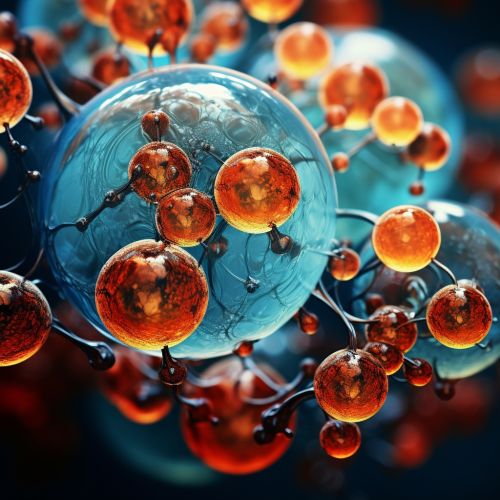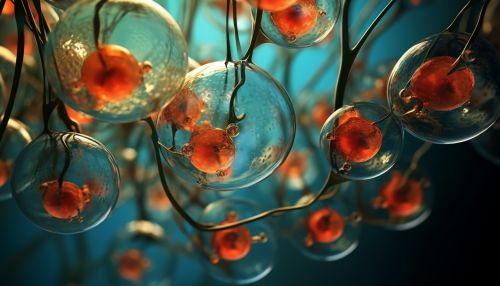Stem cell
Introduction
Stem cells are a class of undifferentiated cells that are capable of differentiating into specialized cell types. Commonly, stem cells come from two main sources: embryos formed during the blastocyst phase of embryological development (embryonic stem cells) and adult tissue (adult stem cells). Both types are generally characterized by their potency, or potential to differentiate into different cell types, such as skin, muscle, bone, and so on.


Characteristics of Stem Cells
Stem cells are characterized by two distinctive properties: their ability to self-renew and their capacity to differentiate into mature cell types. Self-renewal is the process by which stem cells divide to make more stem cells, maintaining their number over time. Differentiation is the process whereby an unspecialized stem cell becomes a specialized cell with a more specific function, such as a muscle cell, a red blood cell, or a brain cell.
Types of Stem Cells
There are several types of stem cells, including embryonic stem cells, adult stem cells, induced pluripotent stem cells (iPSCs), and cord blood stem cells.
Embryonic Stem Cells
Embryonic stem cells (ESCs) are stem cells derived from the undifferentiated inner mass cells of a human embryo. Embryonic stem cells are pluripotent, meaning they are able to differentiate into all derivatives of the three primary germ layers: ectoderm, endoderm, and mesoderm.
Adult Stem Cells
Adult stem cells, also known as somatic stem cells, are found in adult tissues, such as the brain, bone marrow, blood, blood vessels, skeletal muscles, skin, and the liver. They exist to repair and maintain the tissue in which they are found. Unlike embryonic stem cells, adult stem cells are often restricted to differentiating into the cell types of their tissue of origin.
Induced Pluripotent Stem Cells
Induced pluripotent stem cells (iPSCs) are adult cells that have been genetically reprogrammed to an embryonic stem cell–like state by being forced to express genes and factors important for maintaining the defining properties of embryonic stem cells. This process was first accomplished in 2006 by Shinya Yamanaka, who showed that the introduction of four specific genes encoding transcription factors could convert adult cells into pluripotent stem cells.
Cord Blood Stem Cells
Cord blood stem cells are found in the blood of the umbilical cord and placenta at the time of birth. These stem cells are very immature compared to other stem cells, and they have the potential to become many different types of cells in the body.
Stem Cell Research
Stem cell research is one of the most fascinating areas of contemporary biology. The potential uses of stem cells are vast in the realm of research but also in the treatment of diseases. This is because they can regenerate tissues and organs by producing new cells to replace those that are damaged or lost due to disease.
Therapeutic Uses
Stem cells have potential in many different areas of health and medical research. Studying stem cells will help us understand how they transform into the dazzling array of specialized cells that make us what we are. Some of the most serious medical conditions, such as cancer and birth defects, are due to problems that occur somewhere in this process. A better understanding of normal cell development will allow us to understand and perhaps correct the errors that cause these medical conditions.
Regenerative Medicine
Regenerative medicine is a branch of translational research in tissue engineering and molecular biology which deals with the process of replacing, engineering, or regenerating human cells, tissues, or organs to restore or establish normal function. This field holds the promise of regenerating damaged tissues and organs in the body by stimulating previously irreparable organs to heal themselves.
Drug Discovery and Development
Stem cells have enormous potential in health and medical research but to fully harness this potential, scientists are studying how stem cells transform, or differentiate, into the diverse range of specialized cells that make humans what they are today. Because diseases such as cancer or conditions such as birth defects are thought to occur because of problems in the differentiation process, an understanding of the development that happens in normal cells will help scientists treat those that go wrong.
Ethical and Legal Issues
The use of stem cells, particularly embryonic stem cells, is controversial due to ethical and legal considerations. The controversy primarily targets the techniques used to create new lines of embryonic stem cells, which often requires the destruction of the blastocyst. Opponents of the research argue that this practice is a slippery slope to reproductive cloning and can fundamentally devalue human life.
Conclusion
Stem cells are a rapidly evolving area of research with vast potential for medical applications. Their unique regenerative abilities offer new potential for treating diseases such as diabetes, and heart disease. However, much work remains to be done in the laboratory and the clinic to understand how to use these cells for cell-based therapies to treat disease, which is also referred to as regenerative or reparative medicine.
